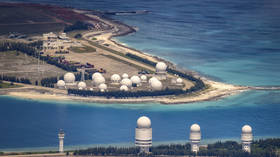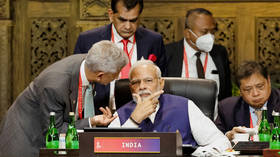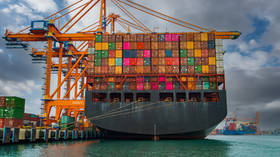US warns of new ‘nuclear threat’ from China – WaPo

The US regards China's plans to deploy floating nuclear reactors that could power military facilities as a threat to regional security, the Washington Post reported on Thursday.
After more than a decade of research and development, China is said to be inching closer to the construction of its first floating nuclear power plant. Beijing has stated that the facility could provide electricity and heat to remote areas, islands, and offshore oil and gas platforms.
US officials claim that Beijing will use floating reactors to power military bases on artificial islands it has built in the South China Sea, arguing that the move would “destabilize” the entire Asia-Pacific.
“China’s intended use of floating nuclear power plants has potential impacts to all nations in the region,” Admiral John Aquilino, who leads US Indo-Pacific Command, was quoted as saying by the Post.
While US officials say China is still several years away from deployment, the US concern was described as “great.” A senior State Department official told the outlet that the closer Beijing gets to deploying floating nuclear reactors, the “faster they’ll use them for purposes contrary to the national security [of the US].”
He noted “long-standing and contentious territorial and maritime disputes” in areas of the South China Sea claimed by both Beijing and the Philippines.
“There are also critical questions around the implementation of existing nuclear safety and security frameworks that still need to be addressed,” the official added.
China started developing floating nuclear power plants in 2010. In 2016, the Global Times said that “each South China Sea island and reef, paired with a floating nuclear-powered platform,” is essentially “a nuclear-powered aircraft carrier equipped with combat aircraft and missile systems” capable of outweighing the military advantage of a US carrier fleet.
Last year, however, Beijing halted plans to build the floating nuclear reactor over concerns that it could be targeted by the US in a Nord-Stream-style attack, according to the South China Morning Post.
The Nord Stream pipelines, which run under the Baltic Sea and carried natural gas from Russia to the EU, were ruptured by underwater explosions in September 2022, rendering them inoperable.
So far, Russia remains the only country in the world to run a floating nuclear power plant, the Akademik Lomonosov, which became operational in December 2019.
It has two KLT-40S reactors on board capable of producing up to 70 megawatts of electricity and 50 gigacalories-an-hour of heat energy. The 140-meter-long vessel, designed to meet high safety standards, has an operational lifespan of 40 years.













